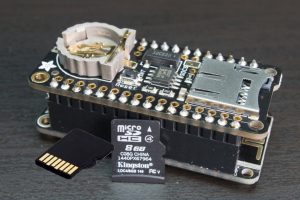11 September, 2017
This is Team Rocket 4 Lyfe, your friendly neighbourhood rocket engineers. This week we have blasted off, making good progress towards their final goal of a functional Pico-Satellite, or PSat, launch. Welcome to our blog, prepare for trouble.
To protect our hardware from devastation…
The soldering has gone successfully underway with three stacks put together, GPS on top, data logger on the bottom. Sensors have been wired up in parallel, and data pins connected. With the camera just attached, a handsome selfie has been taken to verify the working functionality of our space-grade equipment. Sacrifices must be made in the name of science, and rocketry.
… To unite all software with our station…

Our team tirelessly works onwards, through all the hardships of buggy code, PSat dimensions, and derpy photos
Inside the software of the beast, the data logger’s initial code had been underway, with some initial functionality having been established. Script is modified to save pressure and orientationdata to the SD card, with much of the formatting established quite well, only need a time stamp to get clocked off. To achieve all this, a Team Rocket 4 Lyfe GitHub has been established, where the team can contribute to the optimisation and debugging of code.
After this, data plotting will be developed on a program such as excel, to give the clear and accurate quality to our findings that Team Rocket always aspires to.
… To denounce the evils of bugs thereof…
Some final concerns to be handled by the team:
The tracking functionality of the PSat is being worked upon, as our team works on a program that will use the GPS to give our PSat the awareness it needs for our data, and us finding where it has gone off to. A small delay is given in realising the use of our accelerometer was not enough to figure out the apogee of the launch, meaning we will probably rely on another sensor for this data.
We had a connector that broke apart, our resourceful team managing to jury-rig another connector that works just as well, while adding personality.
… To extend our reach to the stars above…
Onboard the PSat will be a total of 4 gigabytes of storage, held between two SD cards.
The actual dimensions of the PSat are being considered now, with the restrictions of a 200g total mass and the ability to withstand 20g at launch. The interior dimensions have been quickly sketched out, and we will be drafting some designs before moving onto the 3D modelling programs, which will then be used to 3D print the specific parts we need.
Data will be plotted over the weekend, and we are working on reading data from the CSV file to the MatLab file.
The PSat will communicate with our groundstation with Wi-Fi, the antenna for which will be included in our next blog, as a very special guest.
Team Rocket, blasting off at the speed of light
So the journey begins.
At the time this blog was written, we are five weeks away from launch. Till then, this is Team Rocket 4 Lyfe, blasting off again.



